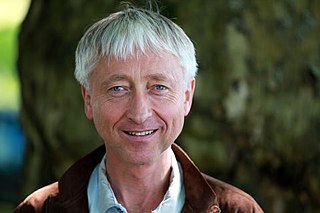
Grażyna Bacewicz Biernacka was a Polish composer and violinist of Lithuanian origin. She is the second Polish female composer to have achieved national and international recognition, the first being Maria Szymanowska in the early 19th century.
Bent Sørensen is a Danish composer. He won the prestigious Grawemeyer Award for Music Composition in 2018 for L'isola della Città (2016).
Éric Gaudibert was a Swiss composer.

Roman Haubenstock - since 1943 Roman Haubenstock-Ramati was a composer and music editor who worked in Kraków, Tel Aviv and Vienna.
Miroslav Miletić (Croatian pronunciation:[mǐrɔlaʋmîlɛitɕ]; was a Croatian composer and a violin and viola player and teacher.
Erich Urbanner is an Austrian composer and teacher.
Rafał Stradomski is a Polish composer of contemporary classical music, pianist and writer.
Bettina Skrzypczak is a Polish/Swiss composer.
Luboš Fišer was a Czech composer, born in Prague. He was known both for his soundtracks and chamber music. From 1952 to 1956 he studied composition at the Prague Conservatory as a pupil of Emil Hlobil. From 1956 he studied at the AMU in Prague. His first publicly performed compositions were Four Pieces for Violin and Piano (1954).
In music, a duodecet—sometimes duodectet, or duodecimette—is a composition which requires twelve musicians for a performance, or a musical group that consists of twelve people. In jazz, such a group of twelve players is sometimes called a "twelvetet". The corresponding German word is Duodezett. The French equivalent form, douzetuor, is virtually unknown. Unlike some other musical ensembles such as the string quartet, there is no established or standard set of instruments in a duodecet.
Ivan Fedele is an Italian composer. He studied at the Milan Conservatory.
Renato Dionisi was an Italian composer and music educator.
Jacques Bondon was a French composer.

Herbert Willi is an Austrian composer of classical music, whose orchestral works, concertos and chamber music have been performed internationally and also recorded. Willi composed an opera, Schlafes Bruder, for the Opernhaus Zürich.



